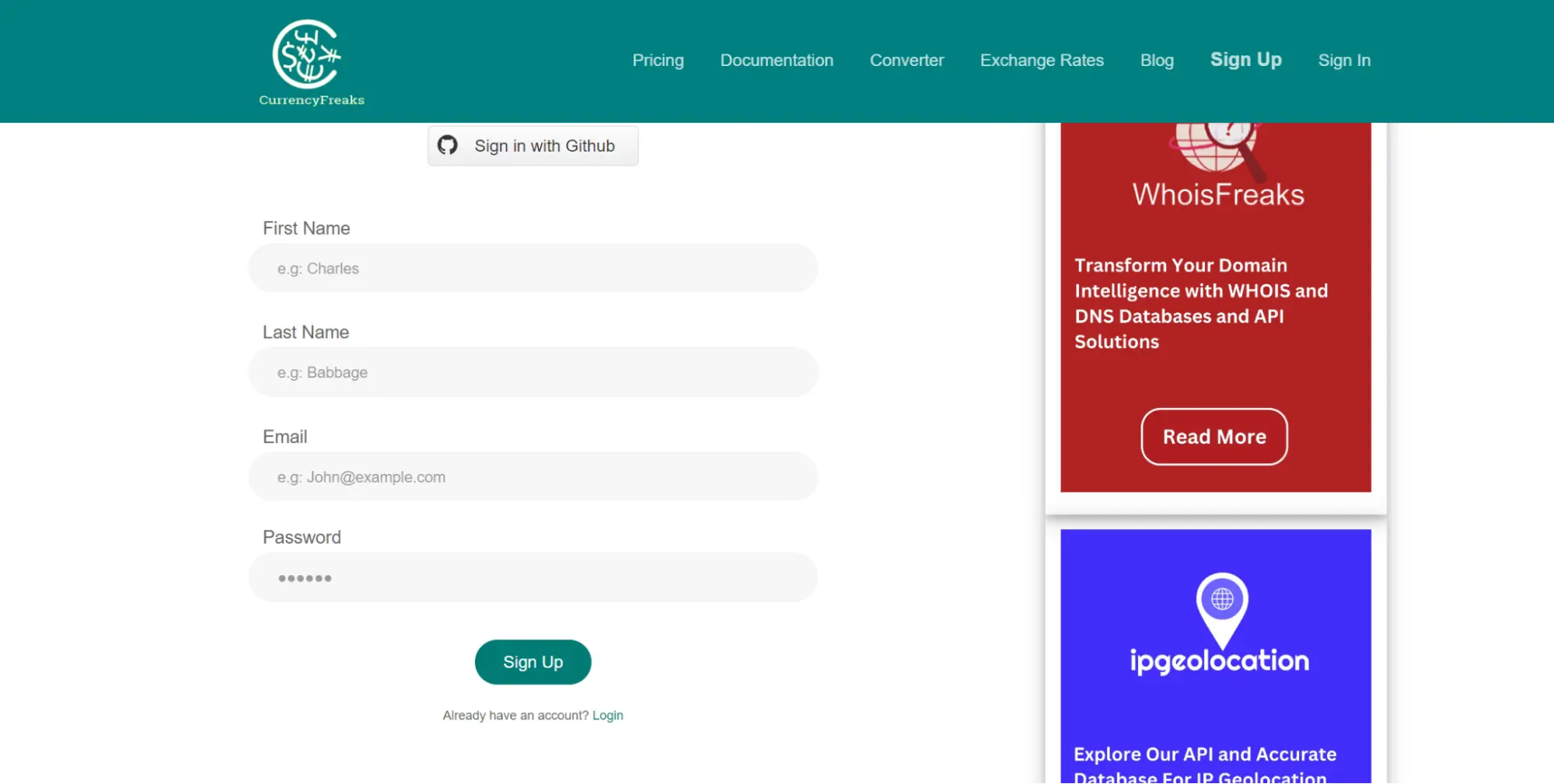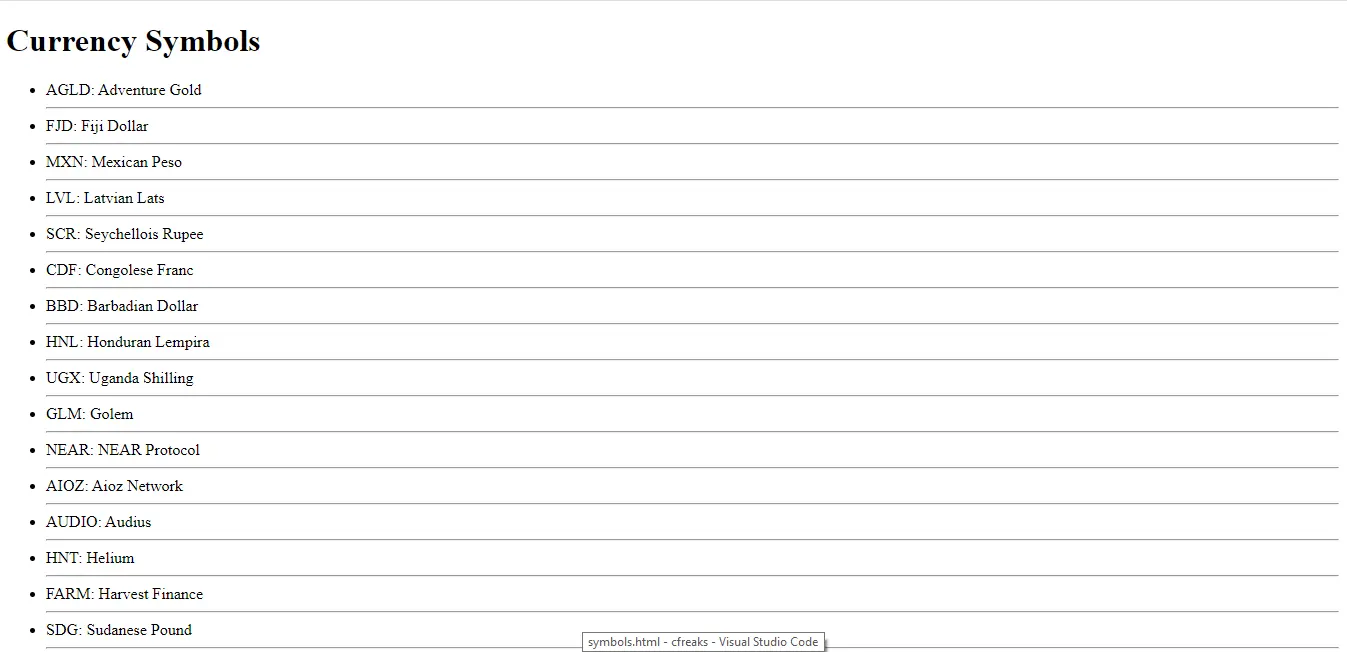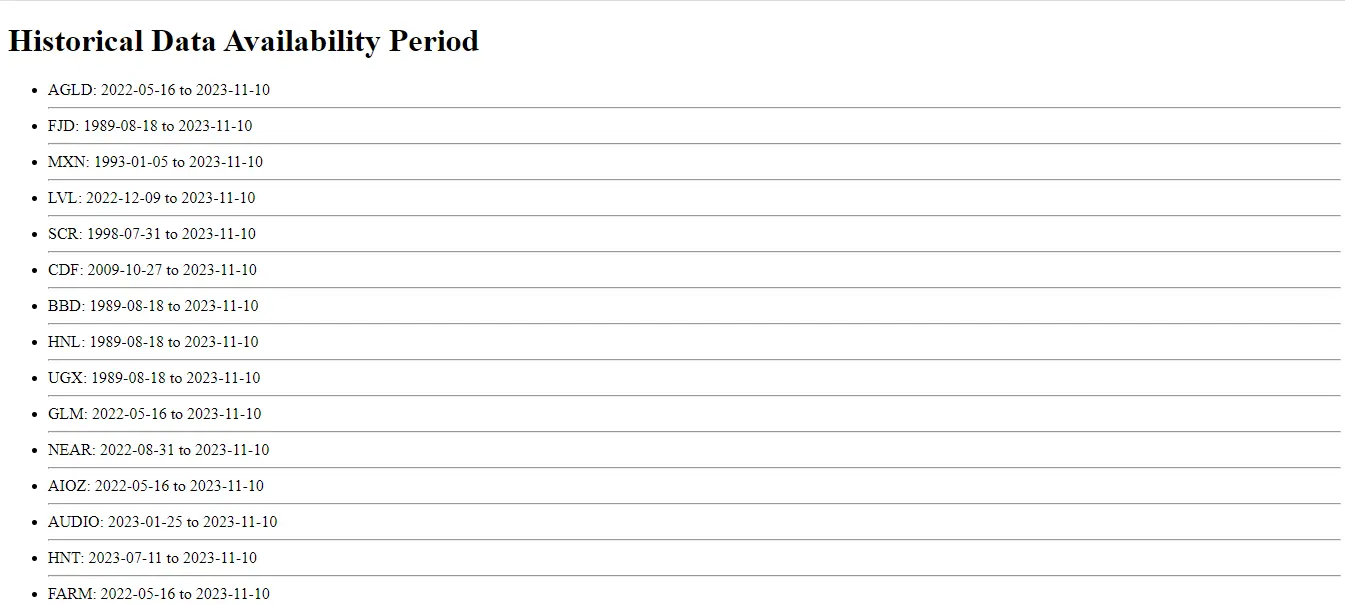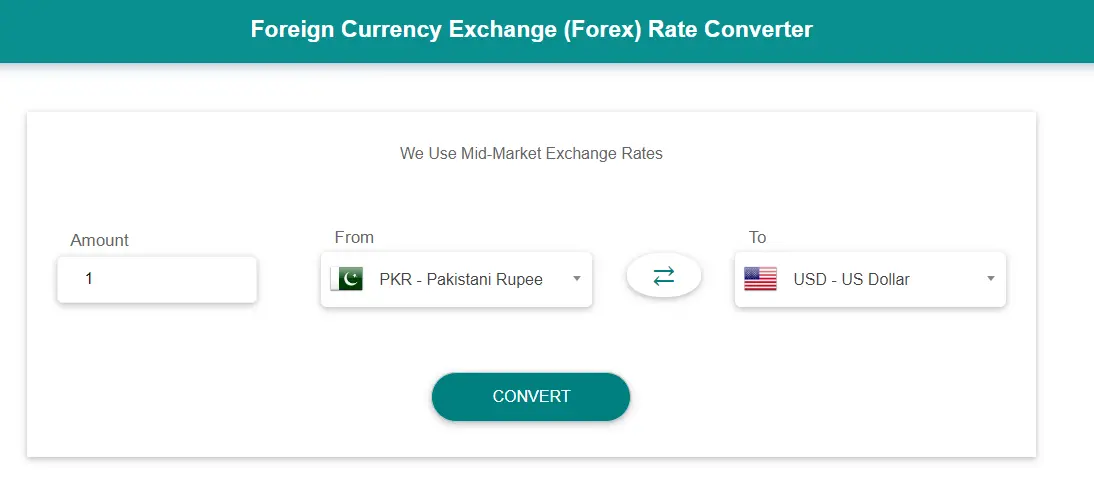Introduction
Whether you are a trader or a developer, the need for currency conversion cannot be underestimated. We need currency converters for multiple applications in today's digital world. However, finding the right currency converter has become a great challenge. The reason is that there are multiple currency converters available in the market.
To solve this kind of issue, we can also develop our currency converter using a free currency converter API. But how do you achieve a reliable currency converter? This is what we will explore in this guide. In this blog, we will use CurrencyFreaks' free currency converter API. Moreover, we will be using Python to convert one currency to another.
For beginners, this guide acts as magic since we will cover all the basics of a detailed implementation of CurrencyFreaks' currency converter API. So, what are you waiting for? Let's continue converting our currencies using CurrencyFreaks. Read this article till the end.
What Are the Steps to Integrate CurrencyFreaks Free Currency Converter API in Python?
While we can demonstrate the integration of the CurrencyFreaks API into Python in a single step, we prefer to provide a detailed procedure. This approach will enhance your understanding of how to integrate an API for currency conversion.
Setting Up the Development Environment
First of all, we need to set up the development environment. Since we are using Python, we need to install Python first. Let's explore all those steps one by 1.
Installing Python
Navigate to the link given below and download the latest version of Python.
https://www.python.org/downloads/

Choosing an HTTP library (e.g., requests)
When using Python, it's essential to select a secure library for handling our API requests. In this article, we will use the 'requests' library.
Before installing this library, create a directory using the command prompt. Then, open this directory in Visual Studio Code, or you may choose your preferred code compiler. However, it's more convenient to use Visual Studio Code.
Once you've opened the directory in your code editor, you can run the following command to import the 'requests' library
pip install requests
Acquiring a Free Currency Converter API Key from CurrencyFreaks
Now, let's move to the main step of our development phase. We need to create an account at the CurrencyFreaks API website. It will help us access the API key. It is important to note that we should not share the API key with anyone. It is like a secure password That can help us access the data from API.



Since we have acquired our API key, It is time to move to the next steps.
Making Your First Free Currency Converter API Request
Now, let's make our first free currency converter API request. Before moving forward, it is important to note that CurrencyFreaks comes with both paid as well as free plans. First, we will introduce you to the free endpoints. Some of the free endpoints do not even require an API key. Then, we will introduce you to the endpoints that are available using paid plans. Let's begin.
Endpoints Without an API Key
The following endpoint gives us information about all the supported currencies for free. The best part to know is that it does not require any API key:
https://api.currencyfreaks.com/v2.0/supported-currencies
Output

The following API endpoint gives us information on the supported currency symbols. This endpoint also does not require an API key:
https://api.currencyfreaks.com/v2.0/currency-symbols
Output

If you want to fetch data linked to cryptocurrencies and forex currencies, use this endpoint:
https://api.currencyfreaks.com/v2.0/historical-data-limits
Output

We've been diligently collecting and curating data since 1984. Therefore, we are giving you access to a wealth of historical financial information. We know that reliability is key for developers. Our data spans over three decades. Therefore, we are offering you a stable foundation for making informed decisions.
Let's explore some endpoints that are available on the free plan but require an API key for API requests.
Endpoints that Require an API Key
the following endpoint helps us fetch the latest exchange rates for given currencies:
https://api.currencyfreaks.com/v2.0/rates/latest?apikey=YOUR_APIKEY
This endpoint works on free plans and paid plans. We have created a simple currency converter app in Python to show you the implementation of the above endpoint. This simple Python app requires a base currency, target currency, and the amount that you want to convert. Let's begin.
How to Get Currency Rates Using CurrencyFreaks API?
Importing necessary libraries
In the previous steps, we installed the requests library. Now, we also need to import requests & JSON libraries. It will help us handle JSON responses from CurrencyFreaks API.
import requests
import json
Constructing the Free Currency Converter API request URL
api_key = 'YOURAPIKEY'
source_currency = input("Enter the source currency code: ").upper()
target_currency = input("Enter the target currency code: ").upper()
amount = float(input("Enter the amount to convert: "))
url = f'https://api.currencyfreaks.com/v2.0/convert/latest?apikey={api_key}&from={source_currency}&to={target_currency}&amount={amount}'
Handling the response and error
try:
response = requests.get(url)
if response.status_code == 200:
data = response.json()
converted_amount = data.get('convertedAmount')
if converted_amount:
print(f'{amount} {source_currency} is equal to {converted_amount} {target_currency}')
else:
print('Conversion data not found in the API response.')
else:
print(f'Failed to retrieve data. Status code: {response.status_code}')
except requests.exceptions.RequestException as e:
print(f'An error occurred: {e}')
Final Code
import requests
import json
api_key = 'YOUR_APIKEY'
source_currency = input("Enter the source currency code: ").upper()
target_currency = input("Enter the target currency code: ").upper()
amount = float(input("Enter the amount to convert: "))
url = f'https://api.currencyfreaks.com/v2.0/convert/latest?apikey={api_key}&from={source_currency}&to={target_currency}&amount={amount}'
try:
response = requests.get(url)
if response.status_code == 200:
data = response.json()
converted_amount = data.get('convertedAmount')
if converted_amount:
print(f'{amount} {source_currency} is equal to {converted_amount} {target_currency}')
else:
print('Conversion data not found in the API response.')
else:
print(f'Failed to retrieve data. Status code: {response.status_code}')
except requests.exceptions.RequestException as e:
print(f'An error occurred: {e}')
Output

What Are the Best Practices to Follow When Using Currency Converter API in Python?
From the above steps, you must have realized that integrating a currency converter API is very easy. However, it is always important to use best practices when integrating these APIs into your application. Let's explore those best practices one by one.
-
Expert developers always recommend using HTTPS requests when using these APIs. This will help protect sensitive data when utilizing a currency converter API.
-
You must not hardcode APIs in your code. Instead, you can secure them in the form of environment variables. You can also store API keys in configuration files.
-
Remember to use error handling when integrating APIs. This can be useful when facing errors like network issues, rate limiting, or unexpected responses.
-
According to experts, you can also implement caching to reduce the number of API calls.
-
Developers should write unit tests to verify the accuracy of currency conversion through an API.
-
It is always best practice to document your code when integrating an API into an application. This will help other developers integrate these APIs easily into their applications or websites.
-
Finally, remember to keep yourself updated with the changes in the API. This will help you provide consistent and real-time conversion data to your users.
Conclusion
In the above article, we have integrated the CurrencyFreaks API in Python. We have developed the code that prompts the user for the base currency and the target currency. It also requests the amount that needs to be converted.
After providing the required details, the API provides the converted amount in real time. It is interesting to note that the free currency converter API offers the latest exchange rates. In the end, we have listed some of the best practices that developers should be aware of when implementing currency converter APIs.
FAQs
Is There a Free Currency Converter API?
There are multiple free currency converter APIs in the market. However, CurrencyFreaks comes with free plan and paid plans. Moreover, it is also easier to integrate.
What API Is Used for Currency Conversion?
You can use CurrencyFreaks API for free to convert currencies.
Is There a Free Currency Converter App?
XE currency converter is one of the free currency converter apps.
What Is the Free Web Service for Currency Conversion?
The best part to know about CurrencyFreaks API is that it also provides a free web currency conversion. You can visit their website and click on the converter tab to convert currencies.

Sign up for free at CurrencyFreaks today - convert your currencies in real time.


